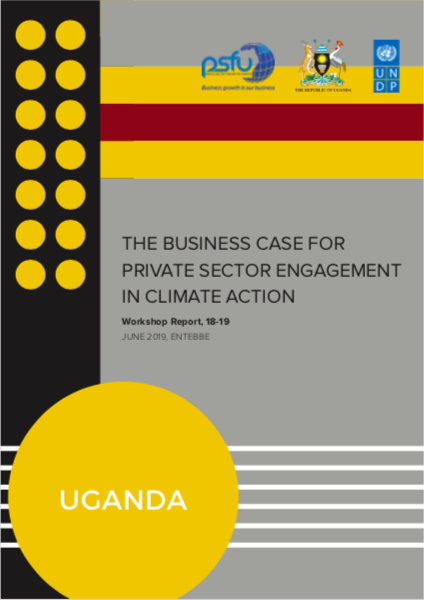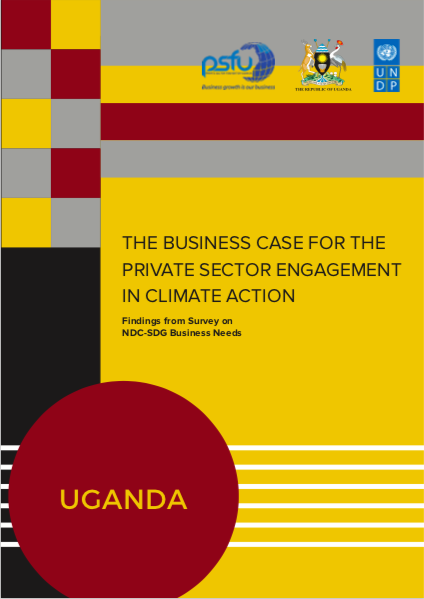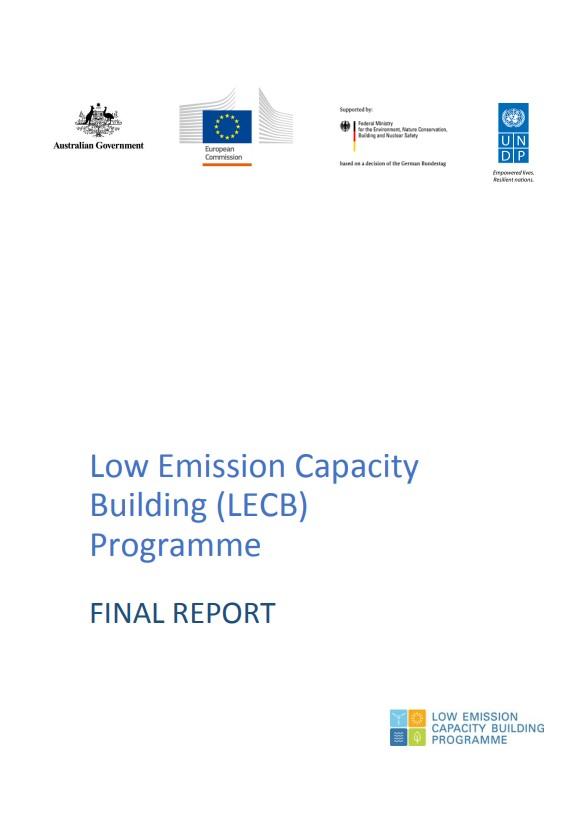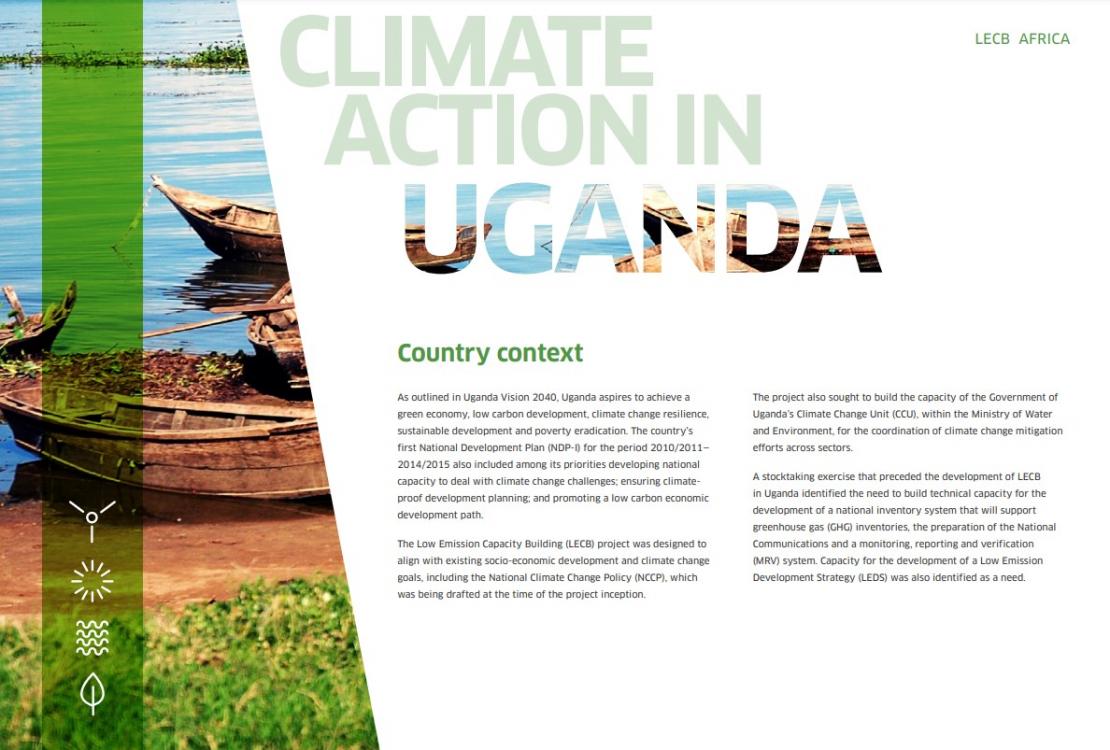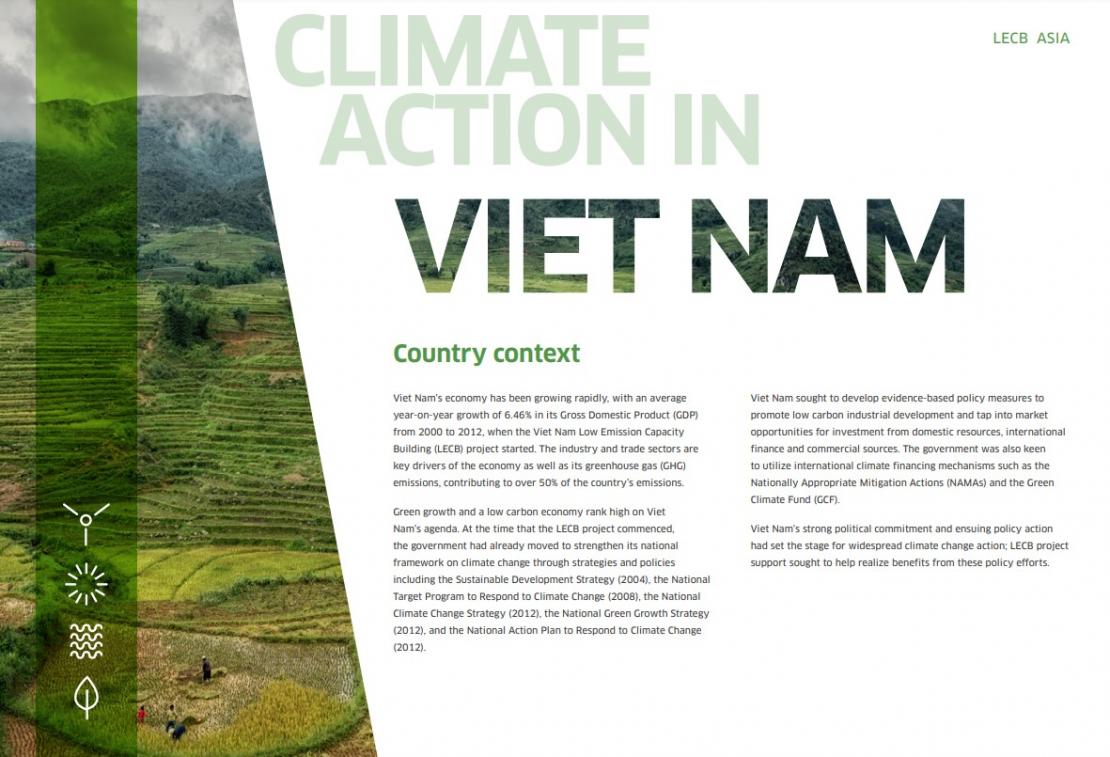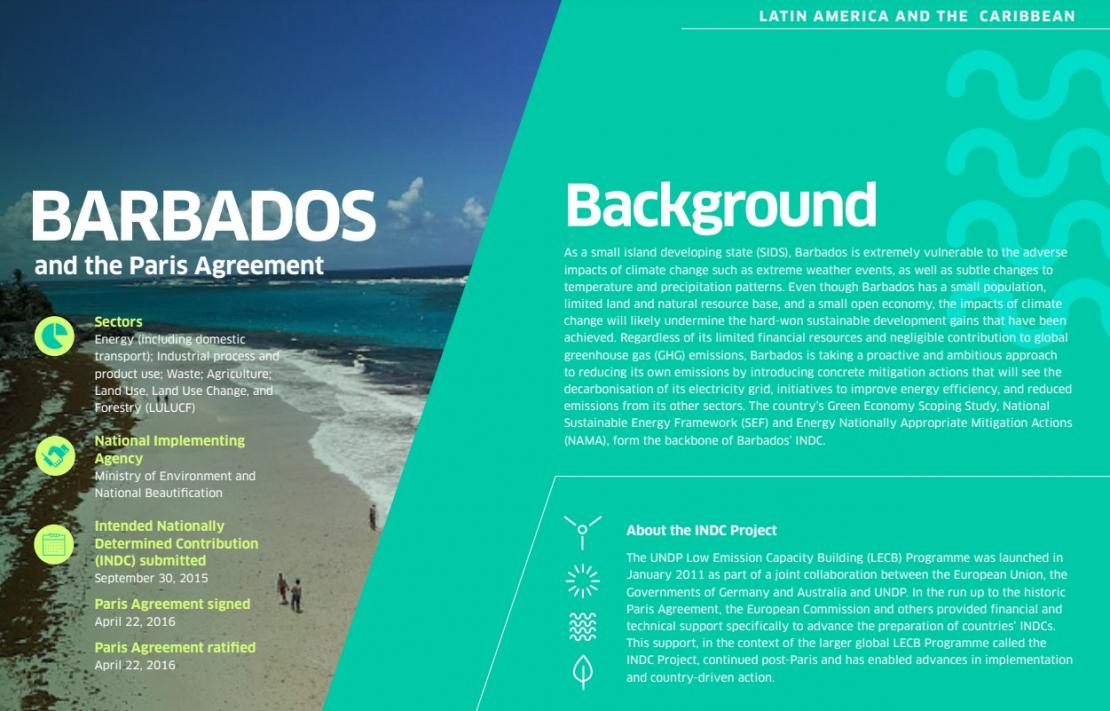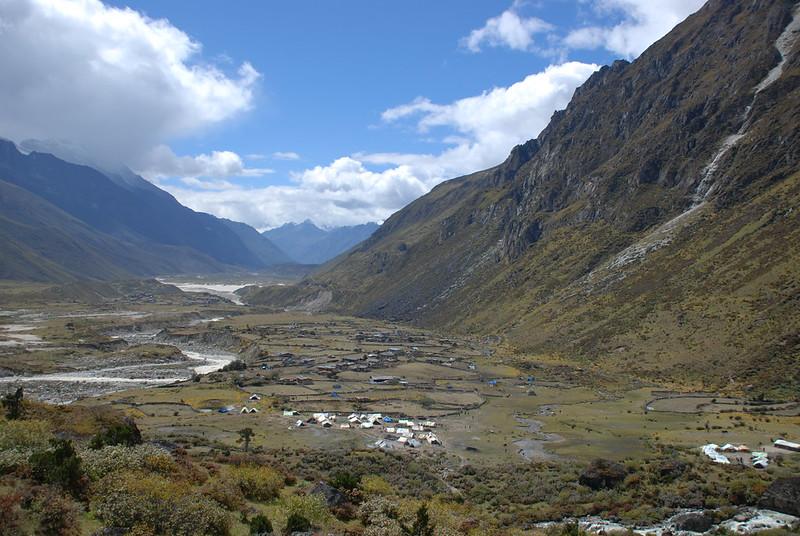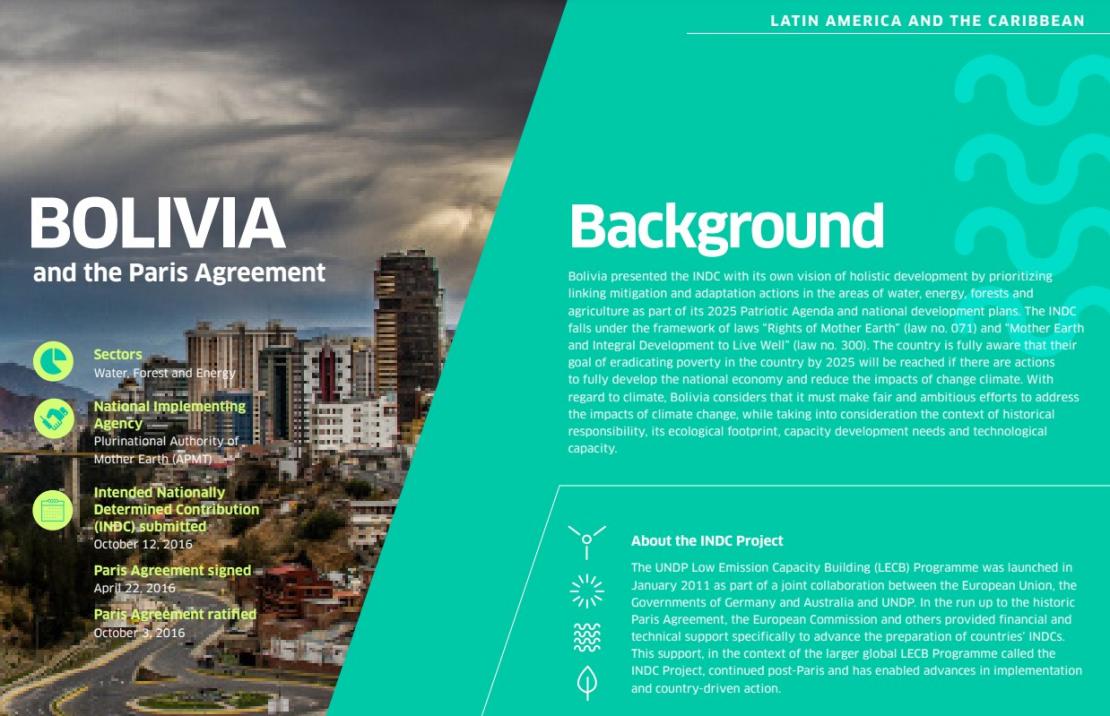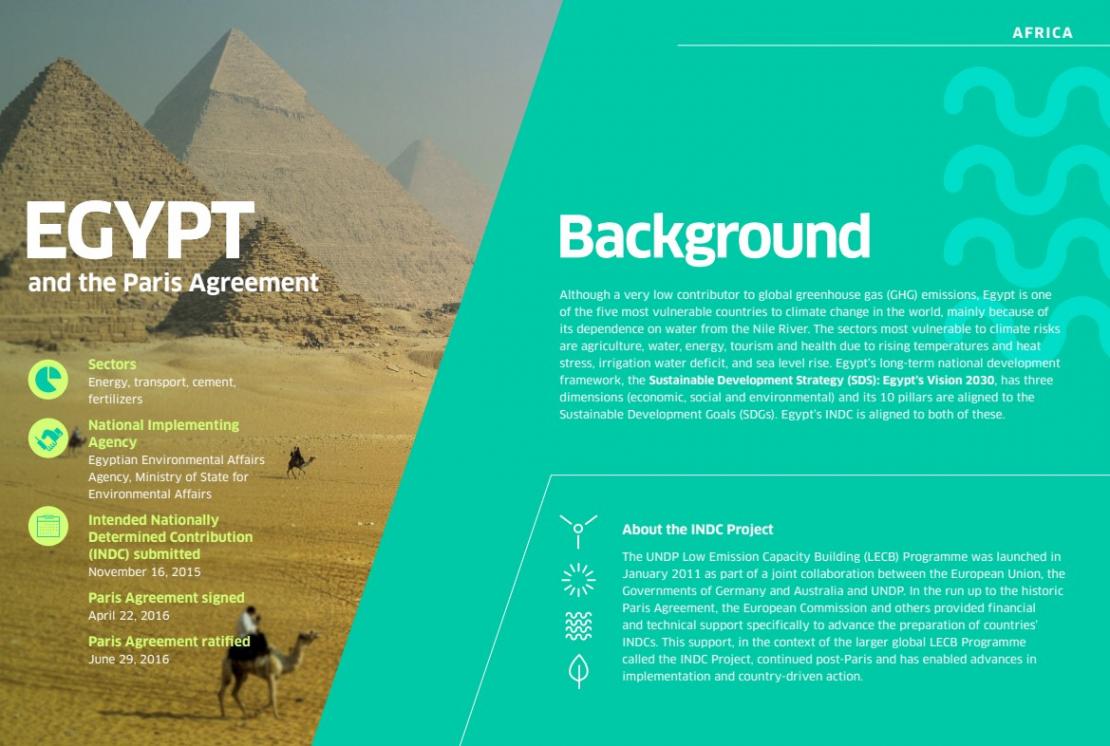A workshop on “Building the business case for Climate and SDG Action in Uganda” was held from 18-19 June 2019, gathering over 90 participants from…
Research and Reports
In April 2019, Uganda launched a private sector consultation to work with Ugandan companies.
The Low Emission Capacity Building (LECB) Programme aimed to build capacity in the public and private sectors of developing countries, to pursue a…
The LECB project strove to support and progress Thailand’s initiatives on climate mitigation.
The LECB project was designed to align with existing socio-economic development and climate change goals, including the National Climate Change…
Viet Nam’s strong political commitment and ensuing policy action had set the stage for widespread climate change action; LECB project support sought…
The LECB project sought to support the Government of Zambia in achieving its main development goals as defined in the Sixth National Development Plan…
The country’s Green Economy Scoping Study, National Sustainable Energy Framework (SEF) and Energy Nationally Appropriate Mitigation Actions (NAMA),…
The INDC Project was implemented in close coordination with the Bhutan’s LECB project, to provide technical support and bring various stakeholders…
In the run up to the Paris Agreement, the European Commission and others provided financial and technical support to advance the preparation of…
Bolivia presented the INDC with its own vision of holistic development by prioritizing linking mitigation and adaptation actions in the areas of…
Egypt’s long-term national development framework, the Sustainable Development Strategy (SDS): Egypt’s Vision 2030, has three dimensions (economic,…
